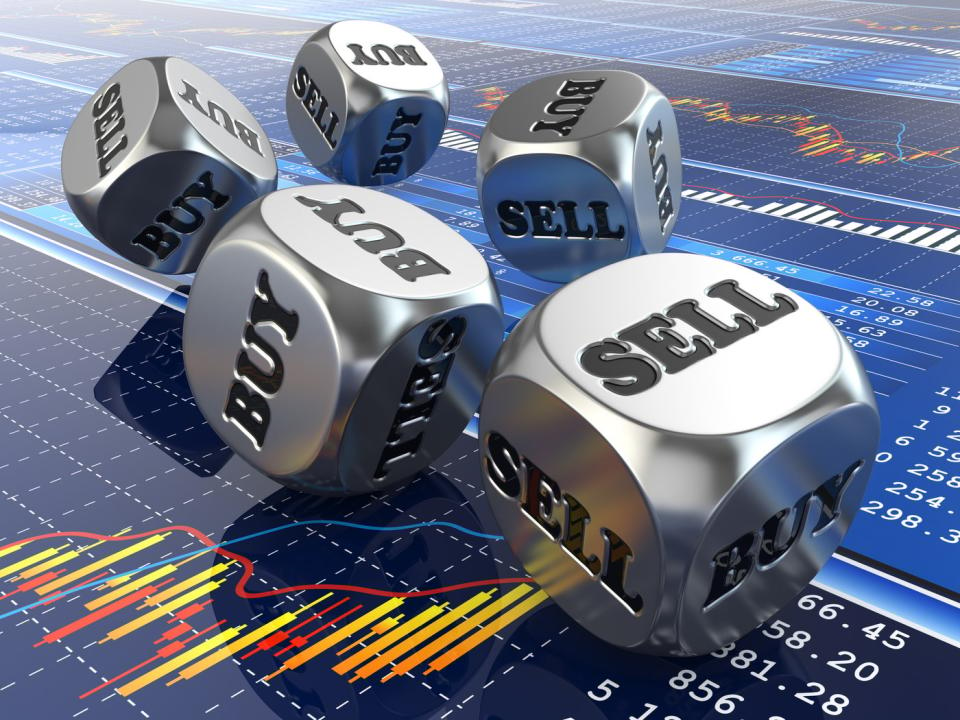Prominent Billionaires Are Selling It and Buying These 2 Ultra-High-Yield Dividend Stocks Instead
Since the advent of the internet roughly 30 years ago, there hasn’t been an innovation or trend that’s excited professional and everyday investors quite like artificial intelligence (AI).
The lure of AI is the ability of software and systems to learn over time without human intervention (what’s known as “machine learning”). Having these systems become more proficient at their assigned tasks, as well as expanding their utility beyond their initial assignment(s), gives AI a use case in virtually all sectors and industries.
Wall Street’s brightest minds and most successful investors aren’t oblivious to the game-changing growth potential AI brings to the table. It’s why semiconductor stock Nvidia (NASDAQ: NVDA) has gained close to $1.9 trillion in market cap since 2023 began.
But not all of Wall Street’s top-tier investors see this AI darling maintaining its elite status.

Prominent billionaires have been decisive sellers of Nvidia stock
Nvidia has arguably benefited from the AI revolution more than any other company. Its A100 and H100 graphics processing units (GPUs) have become the clear choice of businesses running AI-accelerated data centers. Various estimates from Wall Street analysts peg Nvidia’s share of GPUs deployed in high-compute data centers at roughly 90% in 2024!
Additionally, exceptional demand for Nvidia’s chips — especially its H100 GPUs that power large language models and generative AI solutions — helped the company more than triple its Data Center segment sales last year. With demand handily outpacing the supply of its high-powered GPUs, Nvidia’s margins, sales, and profits have all soared.
Despite these positives, eight prominent billionaire investors pared down their fund’s respective stakes in Nvidia during the December-ended quarter. The three biggest sellers included (total shares sold in parentheses):
-
Israel Englander of Millennium Management (1,689,322 shares)
-
Jeff Yass of Susquehanna International (1,170,611 shares)
-
Steven Cohen of Point72 Asset Management (1,088,821 shares)
History provides a key reason for these highly successful billionaires to be skeptical of Nvidia. There hasn’t been a single innovation or next-big-thing trend over the last three decades that didn’t undergo a bubble-bursting event during its early stages of expansion. It’s commonplace for investors to overestimate the adoption of a new technology. More than likely, this’ll be the fate of AI in the not-too-distant future as well.
Nvidia is also set to face a lot of internal competition. While most AI enthusiasts are focused on external competitors, such as Advanced Micro Devices and Intel, the bigger concern is that Nvidia’s four largest customers by net sales (approximately 40% of Nvidia’s revenue) are all developing AI GPUs of their own. If they’re developing their own hardware, there’s a good chance we’re witnessing a peak in orders for Nvidia’s AI infrastructure.
Furthermore, regulators have given billionaires little reason to believe Nvidia’s stock can head higher. U.S. regulators have, on two separate occasions, restricted exports of the company’s high-powered GPUs to China, the world’s No. 2 economy by gross domestic product. These export limitations are likely costing Nvidia billions of dollars in sales each quarter.
While these three prominent billionaires were busy selling shares of Nvidia in the fourth quarter, they were piling into two ultra-high-yield dividend stocks instead. “Ultra-high-yield” refers to any stock with a yield that’s at least four times higher than the current yield of the S&P 500.

Ultra-high-yield dividend stock No. 1 billionaires are buying: AT&T (6.63% yield)
The first supercharged dividend stock that billionaires were aggressively buying as they were simultaneously sending Nvidia to the chopping block is telecom titan AT&T (NYSE: T). During the December-ended quarter, Israel Englander of Millennium Management added 19,054,972 shares of AT&T, while Steven Cohen of Point72 Asset Management purchased 4,970,954 shares.
The biggest challenge for telecom stocks, and the reason they performed so poorly last year, relates to a report from the Wall Street Journal issued in July 2023. The WSJ alleges legacy telecom companies could face exorbitant cleanup costs and health-related liabilities tied to their use of lead-sheathed cables in their networks. Wall Street loathes uncertainty and the possibility of legal overhangs.
The good news for AT&T and its peers is that any possible costs tied to these allegations are years away. AT&T has refuted claims that its lead-clad cables are a health hazard. Further, any liability claims would probably be dealt with in the notoriously slow U.S. court system. Englander and Cohen likely realize the WSJ story is much ado about nothing.
Meanwhile, the bread and butter of AT&T’s operations continue to improve in virtually all aspects. Upgrading its network to support 5G speeds is modestly increasing wireless revenue, keeping churn rates near historic lows, and fueling data consumption, which is the key margin driver of its wireless segment.
Additionally, AT&T’s broadband segment has produced rock-solid gains as investments in 5G have picked up. The first quarter of 2024 saw the company add 252,000 net AT&T Fiber subscribers, which puts it on track to add more than 1 million net broadband subscribers for a seventh consecutive year. Continually adding broadband subscribers is a recipe that should encourage high-margin service bundling.
Lastly, billionaires might be enticed by the presumably safe floor and reasonable upside that accompanies AT&T stock. Shares are currently valued at roughly 7 times Wall Street’s consensus forward-year earnings. Given that wireless access and broadband service have evolved into necessities, there’s not much perceived downside risk in AT&T’s stock at this level.
Ultra-high-yield dividend stock No. 2 billionaires are buying: Pfizer (6.61% yield)
The second ultra-high-yield dividend stock that billionaires were buying as they were dumping shares of Nvidia during the first quarter is none other than pharmaceutical giant Pfizer (NYSE: PFE). Two of the most illustrious buyers of Pfizer stock were Jeff Yass of Susquehanna International (10,947,182 shares purchased) and Israel Englander of Millennium Management (5,282,369 shares purchased).
The best way to describe why Pfizer stock recently hit multiyear lows is that it’s been a victim of its own success. It’s one of the few drug companies that successfully developed a COVID-19 vaccine (Comirnaty) and oral treatment (Paxlovid) during the pandemic. While sales of these two therapies soared to more than $56 billion in 2022, they’re collectively only expected to bring in $8 billion in revenue in 2024. A greater-than $48 billion sales drop-off in two years has deflated expectations and near-term hope for Pfizer stock.
On the other hand, Comirnaty and Paxlovid have given Pfizer an $8 billion boost compared to what the company had in total drug sales at the start of the decade. Further, its non-COVID therapies grew sales by 7% in 2023 and are forecast to increase revenue by 3% to 5% in 2024. In simple terms, Pfizer’s drug portfolio is in far better shape now than it was a few years ago.
Pfizer’s current and prospective shareholders are likely also excited about its integration of cancer-drug developer Seagen, which it acquired in a $43 billion deal in December. Although acquisition-related costs will weigh on Pfizer’s earnings per share (EPS) this year to the tune of ($0.40) per share, the combination of these two businesses will result in meaningful cost savings, a broadening of Pfizer’s cancer-drug pipeline, and tangible EPS expansion in the years to come.
Something that often gets taken for granted when investing in healthcare stocks is that they’re highly defensive. Given that stocks are historically pricey right now, buying shares of a company whose products will be in steady demand regardless of how well or poorly the U.S. economy and stock market are performing should lead to predictable cash flow for Pfizer and a reasonably safe floor for its shares.
Finally, like AT&T, Pfizer’s valuation makes a lot of sense and offers a favorable risk-versus-reward profile. Pfizer stock is currently valued at roughly 9 times Wall Street’s consensus EPS for 2025. This represents a 15% discount to its average forward-year earnings multiple over the last five years.
Should you invest $1,000 in AT&T right now?
Before you buy stock in AT&T, consider this:
The Motley Fool Stock Advisor analyst team just identified what they believe are the 10 best stocks for investors to buy now… and AT&T wasn’t one of them. The 10 stocks that made the cut could produce monster returns in the coming years.
Consider when Nvidia made this list on April 15, 2005… if you invested $1,000 at the time of our recommendation, you’d have $537,557!*
Stock Advisor provides investors with an easy-to-follow blueprint for success, including guidance on building a portfolio, regular updates from analysts, and two new stock picks each month. The Stock Advisor service has more than quadrupled the return of S&P 500 since 2002*.
*Stock Advisor returns as of April 22, 2024
Sean Williams has positions in AT&T and Intel. The Motley Fool has positions in and recommends Advanced Micro Devices, Nvidia, and Pfizer. The Motley Fool recommends Intel and recommends the following options: long January 2025 $45 calls on Intel and short May 2024 $47 calls on Intel. The Motley Fool has a disclosure policy.
Forget Nvidia: Prominent Billionaires Are Selling It and Buying These 2 Ultra-High-Yield Dividend Stocks Instead was originally published by The Motley Fool

